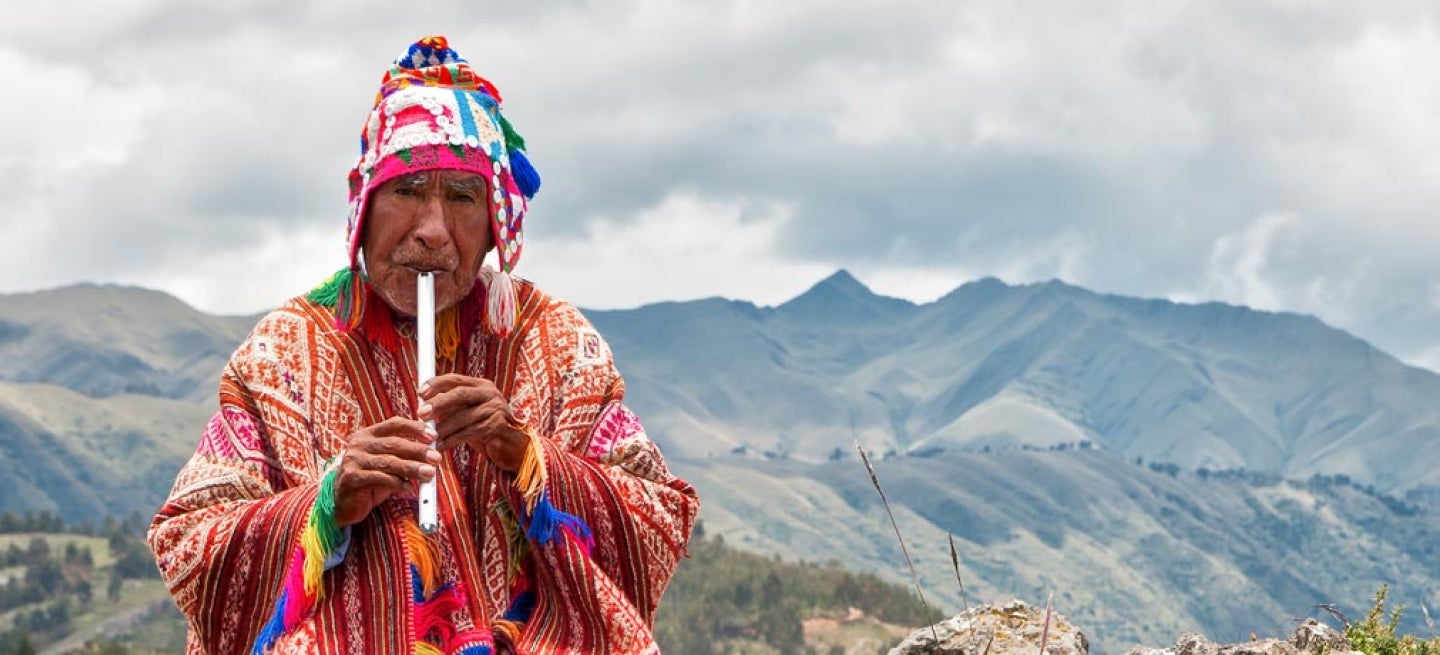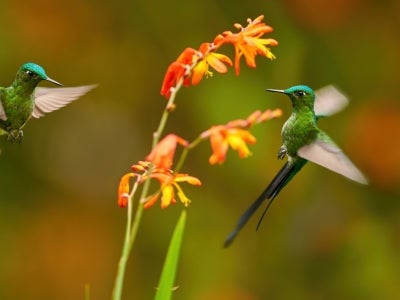Main Issue
Nearly a quarter of the Earth’s surface and vast ocean areas are managed by Indigenous Peoples and local communities (IPLCs), and these areas hold 80% of the Earth's biodiversity. In addition, an estimated 37.7 billion metric tons of carbon is contained in lands where IPLCs have full legal tenure. This presents both enormous challenges and opportunities for the environment and Indigenous Peoples themselves.
The efforts of Indigenous Peoples to maintain their territories have been critically important in providing global environmental benefits. Given the inextricable bond of Indigenous Peoples to the land, any loss of natural resources threatens their identity and impoverishes their communities. But Indigenous Peoples are not only victims of a deteriorating global environment: they are also a source of effective solutions.
The rich traditions and bountiful knowledge of Indigenous Peoples can help the world cope with changing environmental patterns and conditions. And since Indigenous Peoples are often particularly vulnerable to climate change, our efforts at conserving biodiversity can also strengthen their economic and cultural resilience.
What We Do
The GEF has been working in partnership with Indigenous Peoples since its inception in 1991. We were one of the first international financial institutions to develop an independent policy to engage with civil society, including Indigenous Peoples. This policy provides the basis for participation of Indigenous Peoples in all aspects of our work.
In recent years, the GEF has enhanced its partnership with Indigenous Peoples in various ways. We have adopted Principles and Guidelines for Engagement with Indigenous Peoples. We have developed the GEF Policy on Agency Minimum Standards on Environmental and Social Safeguards (which includes a minimum standard dedicated to Indigenous Peoples). And we have established the GEF Indigenous Peoples Advisory Group (IPAG), whose members include Indigenous Peoples and others, and provides useful guidance and partnership to the GEF Secretariat.
Our work is guided by the United Nations Declaration on the Rights of Indigenous Peoples (UNDRIP). As the financial mechanism of the Rio Conventions, the GEF also recognizes the importance of protecting Indigenous Peoples, and the land and resources upon which they depend.
At the 11th Conference of the Parties, for example, the Convention on Biological Diversity (CBD) invited the GEF to provide support to IPLCs to build capacity to participate in legal, policy, and decision-making processes, and assist in building their capacity related to genetic resources and traditional knowledge associated with genetic resources for the implementation of the Nagoya Protocol on Access and Benefit-Sharing.
For its part, the United Nations Framework Convention on Climate Change (UNFCCC) has stipulated that National Adaptation Plans (NAPs) should include Indigenous Peoples in all stages — from design and implementation to monitoring and evaluation. The GEF supports NAPs through its climate change adaptation focal area.
Results
Between 1991 and 2014, the GEF actively involved Indigenous Peoples in over 220 medium- and full-size projects and more than 2,300 projects under the GEF Small Grants Programme (SGP). Biodiversity conservation continues to dominate among projects with Indigenous Peoples. However, in recent years, Indigenous Peoples have been increasingly involved in other GEF focal area projects, such as Climate Change Adaptation and Sustainable Forest Management. Outcomes from these projects include improving Indigenous peoples-related policies; enhancing co-management of protected areas; sustainable and integrated natural resource management; and strengthening institutions, capacity and skills, and knowledge development.
Looking Ahead
Building on this foundation, in GEF-7 the GEF will work with Indigenous Peoples and local communities, national governments, NGOs, and others to strengthen the capacity of IPLCs to conserve biodiversity.
GEF projects funded with the regional/global set aside will focus in geographies where IPLC territories that are home to globally significant biodiversity, and that may also include important carbon stocks, are under threat.
Project investments will focus on:
- Site-based conservation and sustainable use;
- Sustainable financing of IPLC-driven conservation; and
- Capacity development for IPLC organizations and integration of diverse knowledge systems to achieve conservation and sustainable natural resource management outcomes.
Related Topics
Indigenous Peoples Advisory Group
In September 2012, the GEF established an Indigenous Peoples Advisory Group (IPAG) to provide guidance and advice to the GEF Indigenous Peoples focal point on the operationalization and review of the Principles and Guidelines for Engagement with Indigenous Peoples, particularly to enhance dialogue among the Indigenous Peoples, the GEF Secretariat and its partner agencies, and other experts.
The current members of IPAG are:
- Ms. Lucy Mulenkei, Executive Director of the Indigenous Information Center (IPAG Chair), representing Africa
- Mr. Giovanni Reyes, President, Philippines ICCA Consortium, representing Asia
- Ms. Yolanda Teran, Education Coordinator of the Indigenous Women Network on Biodiversity from Latin America and the Caribbean, representing Latin America and the Caribbean
- Ms. Alisi Rabukawaqa, Project Liaison Officer at IUCN, representing Small Island Developing States (SIDS)
- Mr. Gonzalo Oviedo, Independent Consultant (Expert), providing independent expert advice to IPAG
- Mr. Carlos Perez-Brito, Senior Social Development Specialist, World Bank (GEF Agency Alternate Representative)
- Mr. Terence Hay-Edie, Program Advisor, United Nations Development Program (GEF SGP Representative)
The work of IPAG is supported by Ms. Sarah Wyatt, Biodiversity Specialist, from the GEF Secretariat.
IPAG members work on a voluntary basis and have been actively involved in the work of the GEF since 2012. Examples of IPAG activities include:
- Playing a key role in the planning and design of the Inclusive Conservation Initiative, which is designed to empower Indigenous Peoples and local communities (IPLCs) to deliver global environmental benefits through access to larger volumes of resources required for larger-scale biodiversity conservation and natural resource management activities.
- Providing significant input to key GEF policies, such as the GEF Policy on Agency Minimum Standards on Environmental and Social Safeguards. IPAG members were particularly involved in the development and design of a minimum standard dedicated to Indigenous Peoples within this key GEF policy document.
- Promoting GEF interests and programs relating to Indigenous Peoples at key international conventions and fora. This has involved planning and implementing GEF side events and workshops relating to Indigenous Peoples at various international forums, including the Convention on Biological Diversity, UNFCCC, and IUCN World Conservation Congresses.
- Raising awareness among Indigenous Peoples on opportunities for engagement with the GEF and facilitating this involvement wherever possible.
- Providing guidance on financing options for Indigenous Peoples and on key issues such as monitoring and evaluation metrics.
The GEF expresses appreciation to former members of the IPAG for their valuable contributions:
- Mr. Johnson Cerda
- Mr. Luis Felipe Duchicela
- Ms. Mrinalini Rai
- Mr. Legborsi Saro Pyagbara
- Ms. Yeshing Upún


